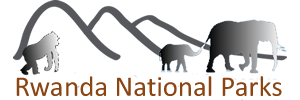Hop on a plane and head to Rwanda, the land of a thousand Hills to encounter mankind’s closest relatives. For most tourists, gorilla trekking is the main or probably the only reason for visiting Rwanda, but there is more to this country than meets the eye. Chimpanzee tracking can also be enjoyed from Nyungwe Forest National Park, situated in the south-western edge of Rwanda. This Park is apparently the only place in the country where tourists that desire to spend some quality time with over 13 species of primates can easily make their dream come true.
Much as it does not have a high demand like gorilla trekking, the feeling of staring into the adorable eyes of mankind’s closest relatives is immeasurable and incomparable. However, the two primate species are different because Mountain gorillas are always found sitting and eating gently in the jungles whereas the chimpanzees are continuously moving swiftly and jumping from one tree branch to another while making ear-splitting noise.
The varying vegetation types of Nyungwe Forest, that are typical montane forests in addition to marshlands, bamboo forests and long grasslands play a significant role in making this site a perfect habitat for the numerous primate species. However of all the primates, the chimpanzees are the stars of the show and definitely the main reason for tourists visiting this verdant National Park during Rwanda safaris. Most importantly, Nyungwe is the largest and oldest montane forest in East and Central Africa hence one of the reasons not to miss it on your bucket list.
The part of Nyungwe Forest where this adventure is conducted starts from near Cyamudongo, approximately 5-hour drive from Kigali. About 500 chimpanzees are estimated to be in this National Park, i.e. two habituated communities including one with about 60 members or more and the second, which is smaller of 30 individuals can be tracked from the nearby Cyamudongo.
Chimpanzees are humankind’s closest relatives sharing 98.7% of their DNA with humans hence one of the reasons it would be interesting to see them display some typical human behaviors. A normal tracking day starts with tourists gathering at Uwinka visitor center for pre-tracking briefing on the do’s and don’ts of the activity. First of all, pre-trackers have to enter the forest to find the location of these primates (depending on where they were the previous day and their current spot) so that tourists don’t move blindly. Interestingly, you will not only see the chimps but also other residents of the Park such as large numbers of the Angolan black and white colobus monkeys, red-tailed monkeys, wild orchids and several tree species of interest.
Prior to seeing these animals, you will be welcomed by their ear-splitting screams, hoots and squawks, and are always seen jumping and swinging from one tree branch to the other, which is contrary to the mountain gorillas that are always calm and quiet. Once sighted, you are expected to spend only one hour with them.
Cost of chimpanzee tracking permit
Chimpanzee tracking permits for Nyungwe Forest National Park cost only $100 per person ($1400 less the price of gorilla permits). With the two groups, only 64 permits are sold per day (based on 8 persons allowed to visit a community). However due to the high demand by tourists, it is always advisable to book for the permits at least 6 months in advance to avoid disappointment.
What to pack or wear for chimpanzee tracking
It is important to carry plenty drinking water (at least 2 liters) to keep you hydrated and packed lunch or snacks because the activity in most cases takes up to 6 hours.
Wear long sleeved shirts to protect your arm from being injured or scratched by grass, stinging nettles or even tree braches
Wear long trousers to protect your legs from the effect of scratching grass. Long socks are also a must-have and you should tuck your trousers into the socks.
Pack a light rain jacket because you cannot predict when the rain will surprise you as you are in the jungles.
Hiking boots are also handy to maneuver through different terrains of Nyungwe Forest National Park. Avoid wearing sneakers or flip-flops because sometimes hiking trails are sometimes muddy and slippery or your feet might get injured by some of the dense vegetation (with thorns) if wearing open shoes.
Do not forget to carry a backpack that you will need for carrying your lunch, drinking water and the rain jacket during tracking.
Much as it is always ignored, a hat is ideal for protecting your head and eyes from the effects of the scorching tropical sunshine.
Best time for Chimpanzee tracking
Chimpanzee tracking is an all year adventure although the dry season from June to September is preferred for a number of reasons. One of the reasons is that the hiking trails are not/or less slippery and muddy hence easier to move through the jungles. However, the rainy season is also advantageous in some way because there is plenty of food and the primates don’t move to far distances thus easier to sight them. The fact that less tourists make trips to the park (low season), you will have the entire Park to yourself.
Besides Chimpanzees, Nyungwe Forest National Park is a home to other primate species such as the Grey-cheeked mangabeys, Angolan black and white colobus monkeys, Hamlyn’s monkeys, Red-tailed monkeys, golden monkeys, silver monkeys, Olive baboons, Dent’s Mona monkeys and Vervet monkeys and also other activities can be relished besides chimpanzee tracking and they include Nature walks (there are 130 kilometers of 13 hiking trails), bird watching and the forest canopy walks. Make a trip to this Park during Rwanda safaris and you will be swept off your feet.
